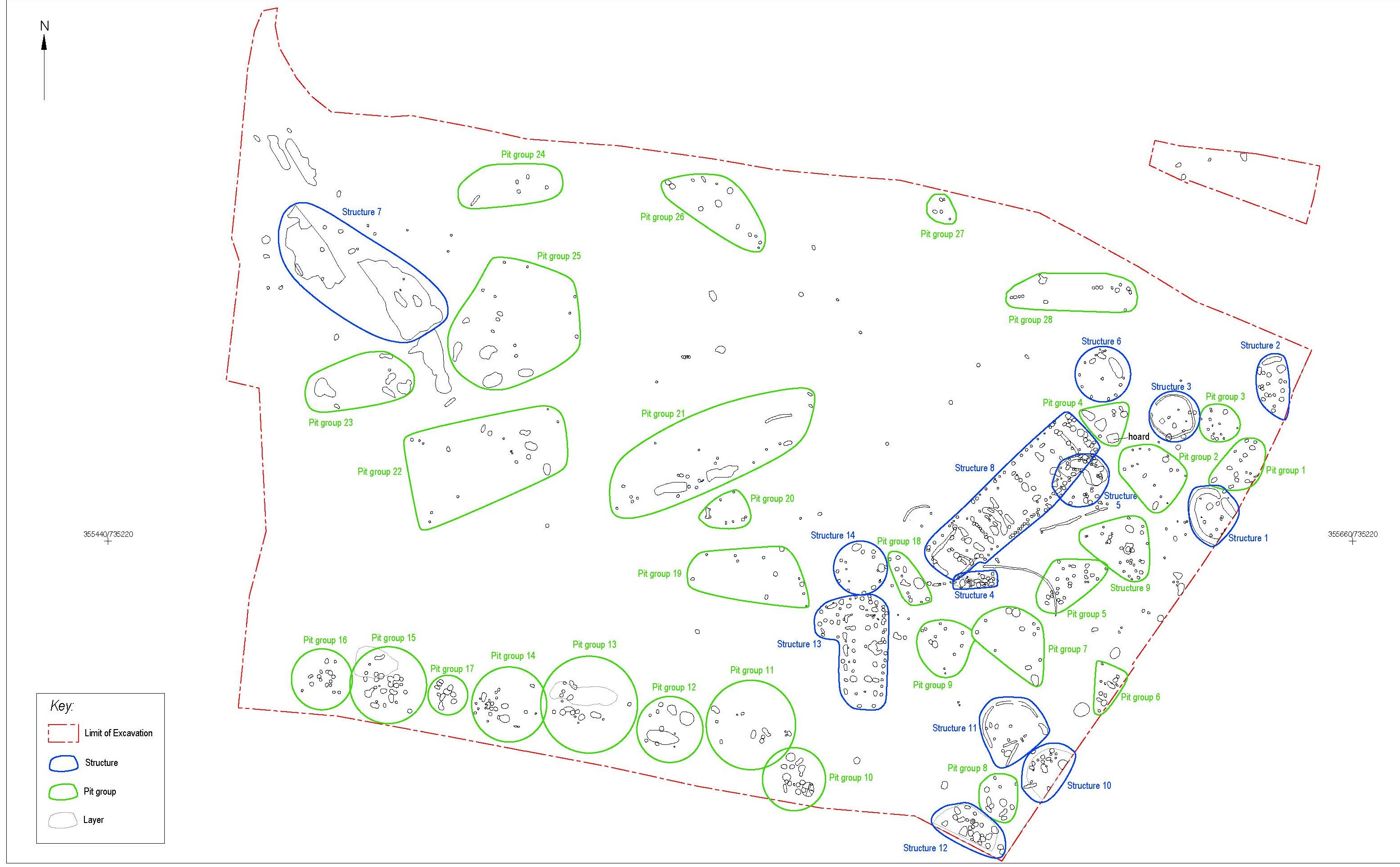The first batch of radiocarbon dates have come back with some interesting results. First of all a couple of occupation layers within Structure 5 (a roundhouse just to the south of the pit containing the Late Bronze Age hoard) have yielded calibrated radiocarbon dates of 1118-931 BC and 1082-905 BC. These dates are very close if not pretty much identical to the calibrated radiocarbon date of 1118-924 BC obtained from the wooden scabbard of the Carnoustie sword. So this confirms that the hoard was buried within a pit that lay within a contemporary Late Bronze Age settlement.

Carnoustie excavation plan
Another question is whether this settlement just comprised the one roundhouse or whether at least some of the other apparent buildings and houses were contemporary with this. Well, another building, Structure 1, which is elliptical in shape and lies to just to the east of Structure 5, yielded calibrated radiocarbon dates of 1046-916 BC and 920-818 BC. Structure 2, a sub-circular structure to the north of Structure 1, yielded calibrated radiocarbon dates of 1084-912 BC and 1192-998 BC. Structure 3, another roundhouse which lies just to the east of the hoard pit yielded a calibrated radiocarbon date of 1207-1017 BC.
Altogether, these radiocarbon dates provide a context for the burial of the Carnoustie hoard. The dates suggest that the hoard was buried within a pit that lay within a large settlement that had developed over the course of the last couple of centuries of the second millennium BC and on into the first couple of centuries of the first millennium BC – ie the Late Bronze Age.
Which is very exciting. And we haven’t yet mentioned the radiocarbon dates for the earlier Neolithic Hall!
